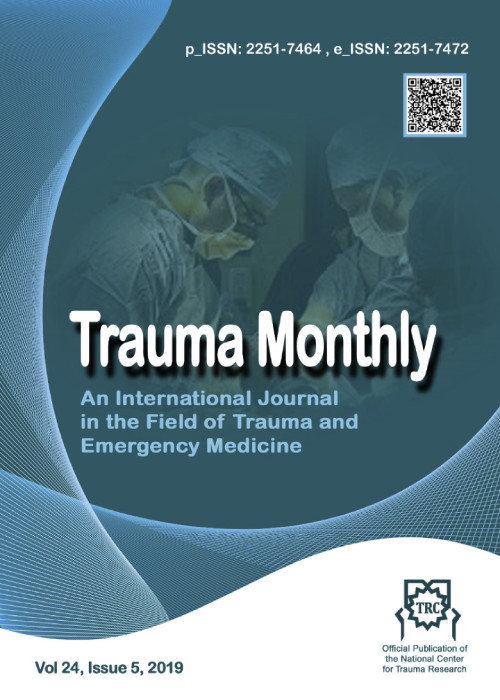Management of Naso-Orbito-Ethmoid Fractures: A 10-Year Review
The naso-orbito-ethmoid (NOE) area is an intricate structure composed of the nasal, lacrimal, maxillary, frontal, and ethmoid bones. The treatment of NOE fractures is one of the most challenging issues in the management of maxillofacial injuries. The management of these fractures requires a thorough knowledge of midfacial anatomy, surgical techniques, and the available implements in order to obtain optimal aesthetic and functional results. The aim of this study was to review current knowledge (i.e., from the past ten years) concerning NOE fractures and the related surgical techniques. Evidence Acquisition: An extensive electronic literature search was performed via international and national databases, including MEDLINE/PubMed, Cochrane Central Register of Controlled Trials (CENTRAL), DOAJ, Iranian Science Information database (SID), Iranmedex, and Irandoc. Literature published between October 2004 and October 2014 was searched for using specific keywords. The references from each study were also searched. Finally, all articles relevant to the selected keywords and the topic of the study were reviewed.
High-energy blunt or penetrating traumas are themost common cause of NOE fractures. NOE fractures account for some 5% and 15% of adult and pediatric facial fractures, respectively. These fractures are characterized by three major post-injury symptoms, namely increased intercanthal distance, diminished nasal projection, and impaired nasofrontal and lacrimal drainage. The prompt management of NOE fractures is of the utmost importance in avoiding secondary deformities. Surgical treatment is guided by the pattern and classification of the injury. The surgical approach also varies according to the fracture type and other concomitant facial injuries. If the fractured fragment cannot be reduced satisfactorily by closed reduction, the operation should be converted into an open reduction and internal fixation. The most common method for medial canthopexy is transnasal wiring.
Nowadays, advances in radiographic imaging along with the evolution in minimally invasive surgical techniques have led to more conservative treatment modalities that may minimize post-injury complications and improve aesthetic outcomes
- حق عضویت دریافتی صرف حمایت از نشریات عضو و نگهداری، تکمیل و توسعه مگیران میشود.
- پرداخت حق اشتراک و دانلود مقالات اجازه بازنشر آن در سایر رسانههای چاپی و دیجیتال را به کاربر نمیدهد.


